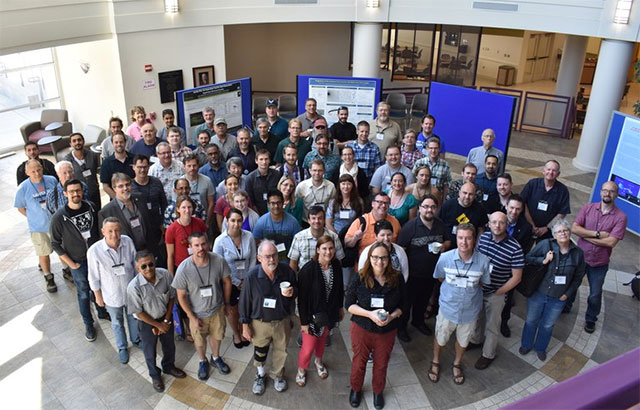Developing the ngVLA Science Program Workshop

The NRAO recently held a workshop focused on developing the science program for the Next Generation Very Large Array. The ngVLA design entails an interferometric array with 10 times larger effective collecting area and 10 times higher spatial resolution than the current VLA and ALMA, optimized for operation in the frequency range 10GHz to 50GHz, with reasonable performance over 1.2GHz to 116GHz. The ngVLA is optimized for observations at wavelengths between the superb performance of ALMA at submm wavelengths, and the future SKA-1 at a few centimeter and longer wavelengths. The ngVLA opens a new window on the Universe through ultra-sensitive imaging of thermal line and continuum emission down to milliarcecond resolution, as well as unprecedented broad band continuum polarimetric imaging of non-thermal processes.

| Key Dates | |
|---|---|
| Registration Opens | December 13, 2016 |
| Abstract Submission Opens | February 1, 2017 |
| Abstract Submission Closes | March 31, 2017 |
| Notifications for Talks/Posters | Mid April |
| Registration Closed |
May 23, 2017 (The maximum of 150 participants has been reached.) |
| Meeting Starts | June 26, 2017 -- WebCast: Please follow these instructions to webcast the meeting. |
The workshop ran from June 26 to 29, 2017 at Workman Center, in Socorro, NM, USA. The program consisted of invited talks highlighting recent results from existing instruments, such as the JVLA and ALMA, and discussed how these results inspire the planning for the ngVLA. We also discussed the synergies between the ngVLA and future major astronomical facilities, such as the JWST, LUVOIR, HABEX, FIR Surveyor, LSST, ELTs and the SKA. The meeting included a call for contributed papers from the community which broaden the ngVLA science case, as well as summaries of the community design studies that are currently wrapping up.




Connect with NRAO